Do you wish to see the WAEC Physics Practical for 2025 | Specimen Apparatus, Questions And Answers? This is the best site where you can get answers to everything related to it. This is a bonus to all the candidates of 2025 MAY/JUNE WAEC, especially the science students.
Are you one of those candidates who are about to write the WAEC physics practical for the 2025 or do you have any of your loved ones who wants to sit for the examination? Are you a secondary school teacher who is currently preparing WAEC candidates on physics practical?
If any of your response to the above questions is yes, then you have to take every information that I am going to share with you in this article very serious. This is the best opportunity for you to make an ‘A’ in your WAEC Physics.
I have discovered how difficult it is for WAEC candidates to tackle Physics, especially the practical aspect of it. Most of them have been searching on how to find the specimen, the exact questions for the examination and the correct answers to all the questions.
Looking at this situation, I have decided to publish this article here for the benefit of every candidate who will be writing physics practical for the 2025 May/June WAEC examination. To have access to the WAEC Physics Practical; Specimen, Questions and Answers, all you have to do is to read this article to the end.
What Is Physics Practical Specimen
Before I proceed to the major focus of the post, I would like to let everyone reading this article to understand the real meaning of specimen and their applications.
I hope that you may have been taught about the meaning of specimen and what they are used for in your respective secondary schools, but this is another opportunity to let it come afresh in your memory in case you have forgotten it.
For those of you have not been taught about specimens, guides and their applications in physics in your schools, you do not have to worry much since you have finally come across the information that I have for you in article.
I hope that you take this article very serious and maximally utilize the information contained therein.
A Physics practical specimen can be said to mean an entity, object or non-living thing or part taken to exemplify or represent a mass of whole number which can serve the same purpose.
Physics practical specimen represents any matter or apparatus that can be used for the purpose of conducting any physics-related experiments. For the purpose of this article, I shall be focusing on the kind of specimen used in the WAEC physics practical.
Areas To Concentrate For WAEC Physics Practical 2025
Having seen what Physics Practical Specimen is all about; let me also reveal to you the most important areas where you can concentrate as far as WAEC Physics Practical for 2025 is concern.
These are the areas that you should be sure that WAEC physics practical specimens and questions are going to come out from. They include the following:
- Optics
- Electricity
- Mechanics
Make sure that you prepare very well in the areas stated above if you want to pass your WAEC physics at one sitting.
See also: Updated May/June WAEC Timetable for the 2025
Guides On How To Answer Physics Practical Questions
Answering physics practical questions is a special practice that every WAEC candidate should not overlook. It requires specific principles that you must follow if you must get the expected results. Here, I am going to guide you on how to answer physics practical questions at any level
Contrary to the general assumption that Physics practical is one of the toughest subjects to write in WAEC, I want to let you know that it is not even tough at all. It only requires the application of some of the basic principles that I am going to show you here.
Also, let me reassure you that it very much possible to write physics practical on your own, without any form of malpractices and you will still make an ‘A’ comfortably.
Follow me as I guide you on the following eye-opening principles that will guarantee your success in WAEC Physics Practical examination:
Study Your Specimens
It is absolutely impossible for anyone to excel in any practical examination with a prior study on the given specimen. As a WAEC candidate, once you are preparing for the practical examination, the aspect that you should pay a kin attention to is everything about the given specimens.
Even in the examination hall, you have to be able to identify the specimens that have been provided for you. Not only that, you should also be able to understanding the application(s) of any provided specimen.
Usually, more than one specimen is given for the purpose of WAEC Physics Practical. A good understanding of the specimens will reveal to you how each of the specimens is related with one another in terms of applications during experiments.
By studying the specimens, you will provide the required answers to the physics practical questions and that will guarantee your excellent performance at the end of the examination.
Read the Practical guideline
You will be provided with practical guidelines during the WAEC Physics Practical examination. Before you proceed with the experiments, make sure that you read the guides carefully so as to follow the right steps from the beginning to the end.
There is no need rush into the practical when you have not understood the practical guideline.
Adhere to Instructions
This is one of the areas that most students get WAEC Physics Practical questions wrong. That you have seen a similar question before should not cause you to delve into answering physics practical questions with a previous knowledge only.
You still have to read and follow strictly to any given instruction during your physics practical examination. In addition, do not assume that WAEC is wrong based on the instruction given, and you will start to be doing another thing.
Make sure that you follow WAEC Physics Practical Instructions strictly.
Report you Practical Works Accurately
Giving accurate report of your practical work is very crucial to your success in the WAEC Practical examination. It is very possible for a candidate to understand what he/she is doing during the examination but not know how to report the work accurately.
Poor presentation of practical report is one of the major setbacks which cause most students to have poor performance in WAEC physics examinations.
It is highly advisable to be conversant with the procedure for reporting WAEC Physics Practical answers even before you get into the examination.
Always be Careful While Handling Apparatus
Almost all the apparatus used in practical, especially Physics and Chemistry are very fragile and delicate to handle. As such, you have to be extremely careful while handling the apparatus during the examination to avoid damaging any of the provided specimens.
Remember that the West Africa Examination Council (WAEC) is not going to give any special consideration to any school that could not complete their experiments due to any damage that happened during the examination.
To avoid this damage, ensure that you read the precautionary measures that are required for every experiment in Physics. Also, take time and study all the necessary laboratory ethics before the date of the examination.
Learn How to Set Up Apparatus
As a science student, one of things that you must also learn before any practical examination is how to set up practical specimen and apparatus, without which, you are not going to get expected result in all your experiment.
Arrange Your Work Very Well
The arrangement of your works matters a lot in every examination. Some of the arrangements that you have to take cognizant of while reporting practical works are Page margin, your numbering pattern, the alignment of your works, your clarity and so on.
You should also take note that in your answer booklet, there is always a part of the margin that you are not expected to write on. You have to adhere to this rule and any other regulation that related to it.
Manage your Time
Time management is also very important. Usually, time that is allotted to WAEC Physics Practical Examination is not always enough for an amateur candidate.
However, if you are able to manage your time very well, you can still finish the examination with the limited time and you will still have enough time left to summarize and revisit you works.
Use the Right Unit
The most important consideration while taken experimental reading in all science subjects is the S.I. Unit. Once your unit is wrong, your answers that are affected will be termed wrong answers.
For the sake of any science examination, you have to consciously learn all the commonly used S.I. Unit of measurements.
Units of Measurement
The following are some of the commonly used S.I. Units in Physics:
| Physical Quantity | Units |
| Time | Second (s) |
| Mass | Kilogram (kg) |
| Distance | Meters (m) |
| Heat | Joule (J) |
| Current | Ampere (A) |
| Voltage | Volt (v) |
| Velocity | Meter per second (MS-1) |
| Acceleration | MS-2 |
| Speed | MS-1 |
| Density | Kg/m3 |
| Area | M2 |
| Energy | Joule (J) |
| Impulse | NS-1 |
| Work | Joule (J) |
| Pressure | N/m2 |
| Force | N |
| Momentum | Kgm/s |
| Volume | M3 |
| Temperature | K |
WAEC Physics Specimens for 2025 (PHYSICS APPARATUS)
For those of you who have been searching for WAEC Physics Specimen for 2025, you are going to see all the list of specimen in this section of the article.
The following are the WAEC Physics Specimen for 2025:
QUESTION 1
- Two-metre rules
- Two Retort stand and clamp
- Thread (about 250cm long)
- Stopwatch Or Clock
- A weighing balance
- Splits Corks
- A set of Masses (Two 10g, two 20g and two 50g)
QUESTION 2
- Ray box with illuminated Object (Crosswire)
- Convex Lens(f=15cm)
- Screen
- Metre Rule
- Lens Holder
QUESTION 3
- Accumulator or two Dry Cells (2×1.5V)
- Ammeter (0—1A)
- Crocodile Clip
- A 2Ω Resistor
- Key
- Constant Wire (About 1m long)
- Connecting Wires
Physics Practical Specimen Pictures



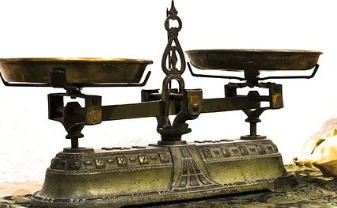
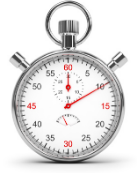
More pictures loading…>>
Keep refreshing this page if you want to see more picture the physics specimens
PRACTICAL PHYSICS INSTRUCTIONS
1. The following announcement should be made to the candidates at the beginning of the examination:
2. The Physics Teacher should be allowed to give a hint to a candidate who is unable to proceed with the experiment.
3. The following regulations must be strictly adhered to.
(a) No hint should be announced to the candidates as a whole.
(b) A candidate who is unable to proceed and requires assistance must come up to you and state his or her difficulty. The candidate should be told that the Examiner will be informed of any assistance given in this way.
(c) A note must be made, on the Report Form, of any assistance given to any candidate, with the name and index number of the candidate.
REPORT FORMS
4. Report Forms are provided separately, on which you are required to state the following:
(a) detailed information about the apparatus where necessary;
(b) any particular difficulties experienced by any candidate, especially if the Examiner would be unable to discover these from the scripts;
(c) any departure from the specified items which could not be avoided;
(d) any assistance given to the candidates under the regulations explained in 4 above.
Apply for: Federal Government Scholarship for BEA
5. In cases where several sets of apparatus are provided for a question and specific information about the apparatus is required by the Examiner, each piece of apparatus about which the information is required, and which may differ slightly for different candidates.
Must he clearly m, ked letters A, B, C, etc. and the corresponding information must be clearly reported, showing which apparatus was supplied to which candidate. The candidates should be instructed to record these letters in their scripts.
6. A completed Report Form must be enclosed in each envelope of scripts.
WAEC Practical Physics Questions for 2025
1. (a) you are provided with a pendulum bob, a metre rule, a stop watch, a retort stand with clamp and other necessary apparatus.
(i) Suspend the pendulum-bob from the clamp as illustrated in the diagram.
(ii)adjust the pendulum such that AC = L = 90cm.
(iii) Displace the pendulum bob is slightly such that it oscillates in a vertical plane
(iv) Measure and record the time t for 20 complete oscillations.
(iv) Evaluate T and the square root of L
(vi) Repeat the procedure for four other values of L = 80cm, 70cm, 60cm and 50cm.
(vii) Tabulate your readings
(viii) Plot a graph with T on the Vertical axis and square root of L on the horizontal axis.
(ix) Determine the slope, s, of the graph.
(x) Evaluate g = 4n2/S2 (xi) State two precautions taken to ensure accurate results.
(b) (i) Determine from your graph the period of the pendulum for L = 75cm
(ii) A simple pendulum bob is set into simple harmonic motion. Sketch a diagram of the set up and indicate on it; the position of;
(a) Maximum Velocity;
(b) Maximum acceleration of the bob.
2. (a) You are provided with a metre rule, lens, screen, ray box and other necessary apparatus.
(i) Set up the experiment as shown in the diagram above. Measure and record the diameter ao of the illuminated object.
(ii) Place the object at a distance x = 25cm from the lens. Adjust the screen until a sharp image is obtained on the screen.
(iii) Measure and record the diameter a, of the image.
(iv) Measure and record the distance v between the lens and the screen.
(v) Evaluate y a/ao , P = 1+y2/y and T = x + y,
(vi) Repeat the procedure for x = 30cm, 35cm, 40cm and 45cm. in each case, determine the corresponding values, a,v,y,P and T,
(vii) Tabulate your results
(viii) Plot a graph of P on the Vertical axis against T on the horizontal axis starting both axes from the origin (0.0).
(ix) Determine the slope, s, of the graph.
(x) Determine the intercept, c, on the horizontal axis.
(xi) Evaluate k = c/2
(xii) State two precautions taken to ensure accurate results.
(b) (i) Explain the statement the focal length of a converging lens is 20cm.
(ii) An object is placed at a distance x from a converging lens of focal length 20cm. If the magnification of the real image formed by the lens is 5, calculate the value of x.
(3) (a) You are provided with an ammeter, resistor, key, metre bridge and other necessary apparatus.
(i) Consider a circuit as shown in the diagram above.
(ii) Close the key and use the jockey to make contact with AB at N such that AN – d = 25cm.
(iii) Read and record the ammeter reading I.
(iv) Evaluate I-1.
(v) Repeat the procedures for values of d = 35cm, 50cm, 65cm, and 80cm. In each case record I and determine I-1.
(vi) Tabulate your results.
(vii) Plot a graph with logI-1 on the vertical axis and d on the horizontal axis.
(viii) Determine the slope, s, of the graph .
(ix) State two precautions taken to obtain accurate results.
(b) (i) Use your graph to determine the value of d = I = 1.5 A. (
ii) State two factors which affect the resistance of a wire.
WAEC Practical Physics Answers for 2025
1. (a)
Sn Lcm 11 (s) 12(s)
(ix) slope = 1.75-1.00/9.0-4.7 = 0.75/4.3 S/cm = 0.174S/cm
(x) g = 4n2/S2 = 4 x (3.142)2/(0.174)cm/s = 1,303cm/s
(xi) The precautions taken to ensure accurate results.
- I avoided conical oscillation
- I avoided zero error on the stopwatch
- I ensured that the bob did not touch the table.
b(i) When L = 75cm
Square root of L = Square root of 75 = 8.66cm
T = 1.675S
2. (a)
(ix) Slope = 2.9-0.4/90 – 47 = 0.0581
(x) Intercept on the horizontal axis = 40.0cm
(xi) k = c/2 = 40.0/2 = 20.0cm
(xii) Precautions
- I avoided zero error on the meter rule
- I avoided parallax error in reading metre rule
- I made sure the surface of the lens is cleared
- I made sure that the lens was kept upright
2. (b)
(i) The focal length of a converging lens in 20cm means that the distance between the optical centre and the lens is 20cm.
(ii) 1/x + 1/v = 1/f
m = v/x > 5= v/x
v = 5x
1/x + 1/5x = 1/20
6/5x = 1/20
x = 24cm
3.
(x) Precautions
- I ensured tight connections
- I avoided zero error on the ammeter
- I avoided parallax error when taking reading on the ammeter
(b) (i)
when I = 1.5A
log 1-1 = log [1/15]s
= log 0.67
= 0.174
when log 1-1 = 0.174
d = 10cm
(ii) Factors affecting resistance
- Thickness of wire
- The cross-sectional area of the wire
- Temperature
See also: How to Check WAEC Result Online – 2025
2025 WAEC Physics Practical Answers
(1)
TABULATE:
| S/N | M(g) | X(cm) | X-1(cm-1) | X-1(10-3) |
| 1 | 40.00 | 37.50 | 0.027 | 27.00 |
| 2 | 60.00 | 25.00 | 0.400 | 40.00 |
| 3 | 80.00 | 18.75 | 0.053 | 53.00 |
| 4 | 100.00 | 15.00 | 0.067 | 67.00 |
| 5 | 120.00 | 12.50 | 0.080 | 80.00 |
Note: G=50.0cm Y=30.0cm
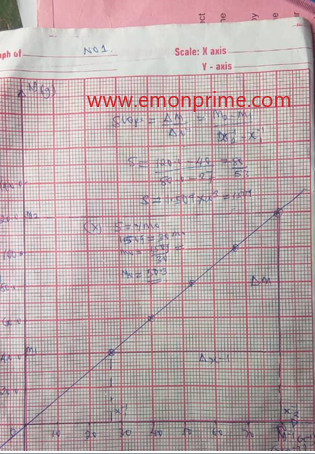
(1a)
(xi) PRECAUTIONS
(i) I ensured that the meter rule balances horizontally before readings are taken in order to avoid experimental error.
(ii) I ensured that parallax error was avoided when taking the readings on The meter rule by viewing its calibration vertically.
(1bi) Moment of a force can be defined as the product of the force and its perpendicular distance from its point of action.
Moment of a force = force x Perpendicular distance of its line of action from the point
Moment = F x D
The S.I unit is Newton-meter(Nm).
It is a vector quantity
(1bii)
x=50-25
=25cm.
y=80-50
=30cm.
From the principle of moment:
Sum of clockwise moment = Sum of anti-clockwise moment
60 * x=m * y
60 x 25 = m x 30
Divide both sides by 30
60 x 25/30 = m x 30/30
m=60 x 25/30
m=2 x 25
m=50g.
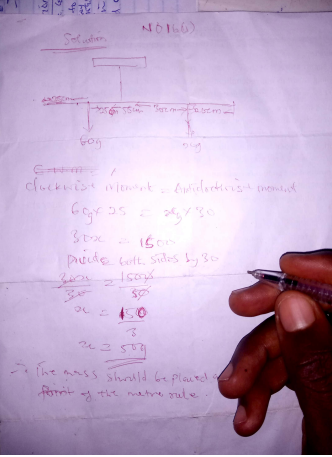
(2)
More Loading…>>
See also: 2025 WAEC Biology Practical Specimen, Questions and Answers
(3a)
(i) E=3.00v
TABULATE.
| R(Ω) | I(A) | V(v) |
| 1.0 | 0.40 | 0.65 |
| 2.0 | 0.35 | 0.58 |
| 4.0 | 0.028 | 0.50 |
| 6.0 | 0.22 | 0.45 |
| 8.0 | 0.18 | 0.40 |

(3aix)
(i) I avoided error due to parallax when reading the ammeter and voltmeter.
(ii) I ensured tight connections.
(3bi)
(Pick any 2)
(i) connecting cells in parallel adds the current capacities together.
(ii) connecting cells in parallel provides alternative Pathways for Current flows.
(iii) When cells are connected in parallel the Total voltage provided do not change
(3bii)
(Pick any 2)
(i) Resistance.
(ii) Tolerance.
(iii) Rated Power Dissipation.
(iv) Package and mounting.
(iv) Voltage rating.

Answers loading…>>
Keep refreshing this page as more answers will be posted as soon as possible.
Related Links:
Complete WAEC Physics Questions and Answers for 2025
Complete WAEC Biology Questions and Answers for 2025
JAMB Cut Off Mark for All Institutions 2025
I believe that you have found this post helpful. For any other questions about the WAEC Physics Practical for 2025 | Specimen, Questions and Answers, kindly make use of the comment section below.
Do well to share this information to others.
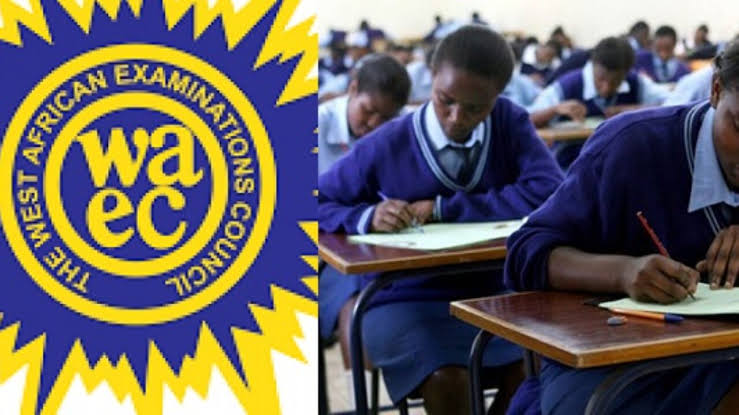
Wow Thanks alot